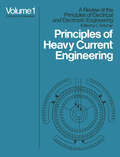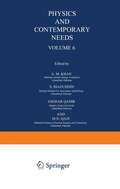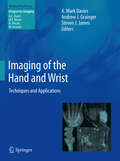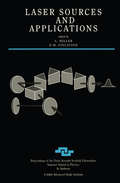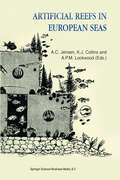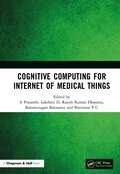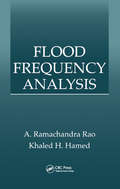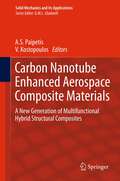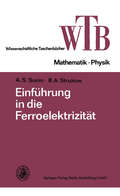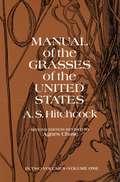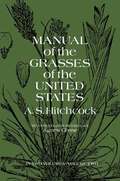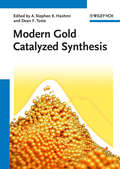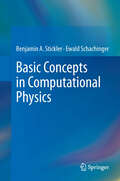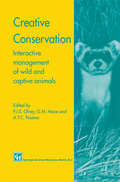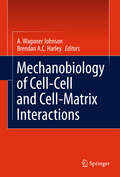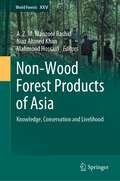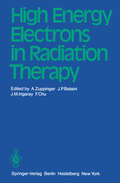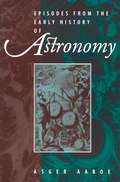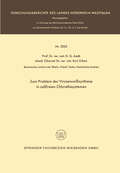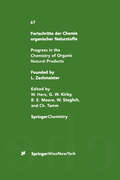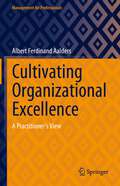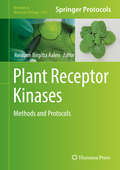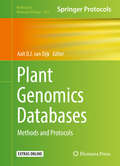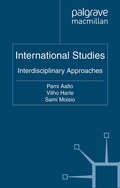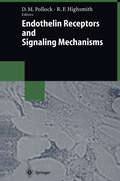- Table View
- List View
Principles of Heavy Current Engineering (A review of the Principles of Electrical & Electronic Engineering)
by A. M. Howatson and P. G. LundPhysics and Contemporary Needs
by A. M. Khan, S. Riazuddin, Asghar Qadir and M. N. QaziThis volume consists of lectures delivered at the Sixth Inter national Nathiagali Summer College on Physics and Contemporary Needs held at Islamabad from June 15 to July 2, 1981. The College used to be held at one of the scenic hill resorts of Pakistan, Nathiagali, hence the name of the College. The College was organized by the Pakistan Atomic Energy Commission (PAEC), under the patronage of the International Centre for Theoretical Physics (ICTP), Trieste, with a view to providing an opportunity for local physicists and physicists from developing countries for learning of the latest developments in various branches of physics. The University Grants Commission provided a financial grant for the participation of physicists from the universities of Pakistan. The College had 18 lecturers from 7 countries. The total participation in the College was by over 200 people from 18 different countries. There were 15 days of concentrated lecturing during the day followed by seminars and discussion sessions in the evenings. From its inception the College has had a broad-based, multi disciplinary emphasis. The purpose of the College has been to provide physicists in the developing countries with enough information in various branches of physics so that they can shift, or broaden, their field of research. In the poor countries, like Pakistan, physicists cannot always get facilities and opportunities to continue research in their original field of specialisation at a reasonable level.
Imaging of the Hand and Wrist: Techniques and Applications (Medical Radiology)
by A. Mark Davies, Andrew J. Grainger and Steven J. JamesIn the past, radiographs of the hand have been described as the “skeleton’s calling card”, showing manifestations of many different diseases. As hand and wrist imaging has become increasingly sophisticated, this observation has become more true than ever. This is a comprehensive, up-to-date textbook on imaging of the hand and wrist. In the first part of the book, the various imaging techniques are discussed in detail. Individual chapters are devoted to radiography, ultrasound, CT, MRI and nuclear medicine. The second part of the book gives an authoritative review of the various pathologies that may be encountered in the hand and wrist, encompassing congenital and developmental abnormalities, trauma, and the full range of localized and systemic disorders. Each chapter is written by an acknowledged expert in the field, and a wealth of illustrative material is included. This book will be of great value to musculoskeletal and general radiologists, orthopaedic surgeons and rheumatologists.
Laser Sources and Applications (Scottish Graduate Ser.)
by A Miller; D M Finlayson; P OsborneRecent years have witnessed rapid advances in the development of solid state, fiber, semiconductor, and parametric sources of coherent radiation, which are opening up new opportunities for laser applications. Laser Sources and Applications provides a tutorial introduction to the basic principles of these developments at a level suitable for postgraduate research students and others with a basic knowledge of lasers and nonlinear optics. Encompassing both the physics and engineering aspects of the field, the book covers the nature of nonlinear optical interactions; solid state, fiber, and semiconductor lasers; optical parametric oscillators; and ultrashort pulse generation and applications. It also explores applications of current interest, such as electromagnetically induced transparency, atomic trapping, and soliton optical communications.
Artificial Reefs in European Seas
by A. P. M.Lockwood, K. J.Collins and A. C.JensenArtificial Reefs in European Seas focuses on artificial reef research in the Mediterranean and NE Atlantic. The book describes most of the long-term projects running in European seas, presents the legal and economic issues, and suggests future uses for artificial reefs in the European context. Readership: Professionals working on or interested in the uses of artificial reefs for fishery management, coastal zone management, aquaculture and nature conservation. The case studies of reef research programmes make the book ideal for degree students studying topics in ecology, and fisheries and coastal management.
Cognitive Computing for Internet of Medical Things
by A. Prasanth, D. Lakshmi, Rajesh Kumar Dhanaraj, Balamurugan Balusamy, P.C. SherimonCognitive Computing for Internet of Medical Things (IoMT) offers a complete assessment of the present scenario, role, challenges, technologies, and impact of IoMT-enabled smart healthcare systems. It contains chapters discussing various biomedical applications under the umbrella of the IoMT. Key Features Exploits the different prospects of cognitive computing techniques for the IoMT and smart healthcare applications Addresses the significance of IoMT and cognitive computing in the evolution of intelligent medical systems for biomedical applications Describes the different computing techniques of cognitive intelligent systems from a practical point of view: solving common life problems Explores the technologies and tools to utilize IoMT for the transformation and growth of healthcare systems Focuses on the economic, social, and environmental impact of IoMT-enabled smart healthcare systems This book is primarily aimed at graduates, researchers and academicians working in the area of development of the application of the of the application of the IoT in smart healthcare. Industry professionals will also find this book helpful.
Flood Frequency Analysis
by A. Ramachandra Rao and Khaled H. HamedAfter five decades, the field of Statistical Hydrology continues to evolve and remains a very active area of investigation. Researchers continue to examine various distributions, methods of estimation of parameters, and problems related to regionalization. However, much of this research appears in journals and reports and usually in a form not easi
Carbon Nanotube Enhanced Aerospace Composite Materials: A New Generation of Multifunctional Hybrid Structural Composites (Solid Mechanics and Its Applications #188)
by A. S. Paipetis and V. KostopoulosThe well documented increase in the use of high performance composites as structural materials in aerospace components is continuously raising the demands in terms of dynamic performance, structural integrity, reliable life monitoring systems and adaptive actuating abilities. Current technologies address the above issues separately; material property tailoring and custom design practices aim to the enhancement of dynamic and damage tolerance characteristics, whereas life monitoring and actuation is performed with embedded sensors that may be detrimental to the structural integrity of the component. This publication explores the unique properties of carbon nanotubes (CNT) as an additive in the matrix of Fibre Reinforced Plastics (FRP), for producing structural composites with improved mechanical performance as well as sensing/actuating capabilities. The successful combination of the CNT properties and existing sensing actuating technologies leads to the realization of a multifunctional FRP structure. The current volume presents the state of the art research in this field. The contributions cover all the aspects of the novel composite systems, i.e. modeling from nano to macro scale, enhancement of structural efficiency, dispersion and manufacturing, integral health monitoring abilities, Raman monitoring, as well as the capabilities that ordered carbon nanotube arrays offer in terms of sensing and/or actuating in aerospace composites.
Manual of the Grasses of the United States, Volume One
by A. S. U.S. Dept. of Agriculture A. S. HitchcockThis work is actually the definitive encyclopedia of United States grass life. Compiled from the U.S. National Herbarium collection, the largest of its kind in the world, it is the only complete manual of U.S. grasses available and one of the basic reference works on U.S. plant life. It catalogs and describes in detail all 1,398 numbered species in 169 numbered genera found in this country, plus 120 species in 16 genera of the so-called “waifs.” Professor Hitchcock is the former Chief Botanist in charge of systematic agrostology for the U.S. Department of Agriculture, by whom the work was originally published, and an internationally known authority.The heart of the book is its detailed descriptions of the family of grasses, the two main subfamilies, the tribes, genera, and species. Quick finding keys are provided for the identification of tribes and genera. Each of the species is given thorough botanical description, including various aspects of its morphology — size, shape, form of culms, blades, panicles, spikes, and flowers — and height, proper planting season, and range of distribution are noted. The Manual also outlines the common uses to which grasses are put and discusses in general terms their distribution, classification, nomenclature, and common names. The 1,199 drawings make identification of any grass species found in the United States a virtual certainty. The appended synonymy of alternate names for each species provides an authoritative taxonomy, eliminating confusion.The nature lover with no more technical equipment than a keen eye can use this manual with profit, for a glossary of botanical terms is included. Naturalists, botanists, agriculturists, and horticulturists will find it valuable as a field and research guide to virtually all the grasses that grow in this country.
Manual of the Grasses of the United States, Volume Two
by A. S. U.S. Dept. of Agriculture A. S. HitchcockThis work is actually the definitive encyclopedia of United States grass life. Compiled from the U.S. National Herbarium collection, the largest of its kind in the world, it is the only complete manual of U.S. grasses available and one of the basic reference works on U.S. plant life. It catalogs and describes in detail all 1,398 numbered species in 169 numbered genera found in this country, plus 120 species in 16 genera of the so-called “waifs.” Professor Hitchcock is the former Chief Botanist in charge of systematic agrostology for the U.S. Department of Agriculture, by whom the work was originally published, and an internationally known authority.The heart of the book is its detailed descriptions of the family of grasses, the two main subfamilies, the tribes, genera, and species. Quick finding keys are provided for the identification of tribes and genera. Each of the species is given thorough botanical description, including various aspects of its morphology — size, shape, form of culms, blades, panicles, spikes, and flowers — and height, proper planting season, and range of distribution are noted. The Manual also outlines the common uses to which grasses are put and discusses in general terms their distribution, classification, nomenclature, and common names. The 1,199 drawings make identification of any grass species found in the United States a virtual certainty. The appended synonymy of alternate names for each species provides an authoritative taxonomy, eliminating confusion.The nature lover with no more technical equipment than a keen eye can use this manual with profit, for a glossary of botanical terms is included. Naturalists, botanists, agriculturists, and horticulturists will find it valuable as a field and research guide to virtually all the grasses that grow in this country.
Modern Gold Catalyzed Synthesis
by A. Stephen K. Hashmi F. Dean TosteWith its impressive features, gold has led to completely new reaction types in recent years, which in turn have strongly influenced both organic catalysis and material science. Other fields where a significant amount of new results has been obtained include nanotechnology, self assembly/supramolecular systems and biochemical/medicinal chemistry. As a result, gold is one of the hottest topics in catalysis at the moment, with an increasing amount of research being carried out in this field. While focusing on homogeneous catalysis, this monograph also covers the main applications in heterogeneous catalysis. Following a look at the gold-catalyzed addition of heteroatom nucleophiles to alkynes, it goes on to discuss gold-catalyzed additions to allenes and alkenes, gold-catalyzed benzannulations, cycloisomerization and rearrangement reactions, as well as oxidation and reduction reactions. The whole is finished off with a section on gold-catalyzed aldol and related reactions and the application of gold-catalyzed reactions to natural product synthesis. Of interest to synthetic chemists and inorganic chemists, as well as organic chemists working in homogeneous catalysis, physical and technical chemists.
Basic Concepts in Computational Physics
by Benjamin A. Stickler Ewald SchachingerWith the development of ever more powerful computers a new branch of physics and engineering evolved over the last few decades: Computer Simulation or Computational Physics. It serves two main purposes:- Solution of complex mathematical problems such as, differential equations, minimization/optimization, or high-dimensional sums/integrals.- Direct simulation of physical processes, as for instance, molecular dynamics or Monte-Carlo simulation of physical/chemical/technical processes.Consequently, the book is divided into two main parts: Deterministic methods and stochastic methods. Based on concrete problems, the first part discusses numerical differentiation and integration, and the treatment of ordinary differential equations. This is augmented by notes on the numerics of partial differential equations. The second part discusses the generation of random numbers, summarizes the basics of stochastics which is then followed by the introduction of various Monte-Carlo (MC) methods. Specific emphasis is on MARKOV chain MC algorithms. All this is again augmented by numerous applications from physics. The final two chapters on Data Analysis and Stochastic Optimization share the two main topics as a common denominator. The book offers a number of appendices to provide the reader with more detailed information on various topics discussed in the main part. Nevertheless, the reader should be familiar with the most important concepts of statistics and probability theory albeit two appendices have been dedicated to provide a rudimentary discussion.
Creative Conservation: Interactive management of wild and captive animals
by A. T. C.Feistner G. M. Mace P. J. S.OlneyPast progress and future challenges R.J. Wheater Royal Zoological Society of Scotland, Edinburgh, UK. In the past two decades much has been achieved in the sphere of breeding endangered species, and we should be pleased that our co operative efforts have already borne so much fruit. However, on balance and despite the best efforts of conservationists, the position of wildlife in the wild places where they are best conserved has become worse, often dramatically worse. Before returning to the United Kingdom in 1972, I was in Uganda for 16 years, most of which time was spent as Chief Warden of Murchison Falls National Park. Our main problem was that an over-population of large mammals was having a devastating impact on the habitat. Devas tation was being wrought on woodland areas by the arrival of large numbers of elephants into the sanctuary of the Park, following changes in land use in the areas outside the Park. These changes were in response to the requirements of an ever-expanding human population.
Mechanobiology of Cell-Cell and Cell-Matrix Interactions
by A. Wagoner Johnson and Brendan A.C. HarleyMechanobiology of Cell-Matrix Interactions focuses on characterization and modeling of interactions between cells and their local extracellular environment, exploring how these interactions may mediate cell behavior. Studies of cell-matrix interactions rely on integrating engineering, (molecular and cellular) biology, and imaging disciplines. Recent advances in the field have begun to unravel our understanding of how cells gather information from their surrounding environment, and how they interrogate such information during the cell fate decision making process. Topics include adhesive and integrin-ligand interactions; extracellular influences on cell biology and behavior; cooperative mechanisms of cell-cell and cell-matrix interactions; the mechanobiology of pathological processes; (multi-scale) modeling approaches to describe the complexity or cell-matrix interactions; and quantitative methods required for such experimental and modeling studies.
Non-Wood Forest Products of Asia: Knowledge, Conservation and Livelihood (World Forests #25)
by A. Z. M. Manzoor Rashid Niaz Ahmed Khan Mahmood HossainThis book highlights the importance of non-wood forest products (NWFPs) and their crucial role in sustaining the livelihood of rural and indigenous communities in Asia. The authors depict how the preservation of forests and the associated major non-wood resources may provide an important avenue to reduce poverty. The local practices and knowledge on harvesting NWFPs are often rooted in tradition, and vary from one region to the other. This made it difficult to develop and establish research focus on a greater scale in the past. Readers of this volume will gain an often-missed, broader perspective from these new studies. The authors put a special emphasis on the nexus between conservation and livelihood from an Asian point of view. This addresses a knowledge gap in the current literature and offers important clues on conducting similar research around the world. The volume provides a useful reference guide for the relevant researchers, practitioners and policy makers.
High Energy Electrons in Radiation Therapy
by A. Zuppinger, J. P. Bataini, J. M. Irigaray and F. ChuEpisodes From the Early History of Astronomy
by Asger AaboePhenomena in the heavens are of great importance to many, and much of the lore of astronomy and astrology dates back to the earliest days of civilisation. The astronomy of the ancients is thus of interest not only as history but also as the basis for much of what is known or believed about the heavens today. This book discusses important topics in Babylonian and Greek astronomy.
Zum Problem der Viruseiweißsynthese in zellfreien Chlorellasystemen: nebst einer Diskussion über die Universalität des genetischen Codes (Forschungsberichte des Landes Nordrhein-Westfalen #2003)
by Hans G. AachDie ersten Bemühungen, durch das Studium genetisch bedingter Abänderungen einzelner Aminosäuren in Virusproteinen einen Einblick in die Gesetze zu erhalten, nach denen in den lebenden Organismen eine bestimmte Nukleinsäurestruktur eine bestimmte Ei weiß struktur bedingt, liegen bereits über 10 Jahre zurück (s. MELCHERS, 1958). Hoch aktuell sind diese Fragen aber erst nach den erfolgreichen Experimenten von MATTHAEI und NIRENBERG (1961) geworden. Die Konzeption der beiden ging von der heute all gemein anerkannten Tatsache aus, daß die genetische Information innerhalb der Zellen in der Desoxyribonukleinsäure (DNS) festgelegt ist und daß von den aktiven Ab schnitten der DNS relativ kurze Abschnitte der Information in der chemischen Form der Ribonukleinsäure (RNS) als Informationsüberträger ins Zellplasma entsandt werden. Sie werden als Messenger- oder Boten-RNS bezeichnet. Die Transkription von DNS auf RNS erfolgt nach den Paarungs regeln von WATSON und CRICK. Die Boten-RNS trifft dann auf die Ribosomen, die eiweißsynthetisierenden Zellorganellen, und veranlaßt sie, ganz spezifische Eiweißkörper aufzubauen, deren Aminosäure sequenz durch die Nukleotidsequenz der Boten-RNS festgelegt ist. Die Regeln, die die Übersetzung der Nukleotidfolge in die Eiweißstruktur bestimmen, bezeichnet man als den genetischen Code. Dieser gesetzmäßige Zusammenhang ermöglicht es dem Zellkern, die Synthesen im Cytoplasma außerhalb des Kerns weitgehend zu beherrschen. Die karyotische Regulation wird aber durchbrochen, wenn ein Virus die Zelle infiziert. Von vielen gut studierten Beispielen weiß man, daß nur die Nukleinsäure des Virusteilchens bei der Infektion in die Wirtzelle eindringt.
Fortschritte der Chemie organischer Naturstoffe / Progress in the Chemistry of Organic Natural Products (Fortschritte der Chemie organischer Naturstoffe Progress in the Chemistry of Organic Natural Products #67)
by A.A.L. Gunatilaka C. Tamm P. Walser-VolkenContents: A.A. Leslie Gunatilaka: Triterpenoid Quinonemethides and Related Compounds (Celastroloids). - P. Walser-Volken and Ch. Tamm: The Spirostaphylotrichins and Related Microbial Metabolites. The volumes of this classic series, now referred to simply as "Zechmeister” after its founder, L. Zechmeister, have appeared under the Springer Imprint ever since the series’ inauguration in 1938. The volumes contain contributions on various topics related to the origin, distribution, chemistry, synthesis, biochemistry, function or use of various classes of naturally occurring substances ranging from small molecules to biopolymers. Each contribution is written by a recognized authority in his field and provides a comprehensive and up-to-date review of the topic in question. Addressed to biologists, technologists, and chemists alike, the series can be used by the expert as a source of information and literature citations and by the non-expert as a means of orientation in a rapidly developing discipline.
Cultivating Organizational Excellence: A Practitioner’s View (Management for Professionals)
by Albert Ferdinand AaldersThis book offers a comprehensive approach to organizational excellence based on the author’s vast experience in managing excellence at highly innovative and dynamic organizations. It integrates various approaches into a consistent view of achieving excellence in the context of dynamic technological and societal developments. Starting from purpose and mission, it describes stakeholder mapping and analysis, and process and quality management. In turn, it sheds light on how to deal with business dynamics of various types and demonstrates how quantum-mechanical models can help to understand and manage dynamic organizational processes. The book then introduces readers to result measuring and performance management, followed by organizational learning and rewards and recognition. Moreover, it discusses (innovation) ecosystem leverage and organizational culture management as further important capabilities of excellent organizations. Best practices in corporate social responsibility and environmental, social and governance aspects are fully integrated throughout the book, which concludes by explaining how the UN Sustainable Development Goals can be applied to optimize business initiatives. The book is intended as a source of inspiration for managers working under highly dynamic organizational conditions, helping them take their businesses to higher levels. It also provides valuable industrial insights for scholars with an interest in organizational excellence.
Plant Receptor Kinases: Methods and Protocols (Methods in Molecular Biology #1621)
by Reidunn Birgitta AalenThis is volume presents protocols relevant for plant receptor kinases(PRK) both in development and defence. Chapters guide readers through comprehensive experimental approach for molecular investigations of plant receptor kinases, from the simplest methods for expression and purification of receptor domains to the most advanced methods aiming at understanding the dynamics of receptor complex formation and specificity of signaling pathways. Written in the highly successful Methodsin Molecular Biology series format, chapters include introductions to their respective topics, lists of the necessary materials and reagents, step-by-step, readily reproducible laboratory protocols, and tips on troubleshooting and avoiding known pitfalls.Authoritative and practical, Plant Receptor Kinases: Methods and Protocols aims to ensure successful results in the further study of this vital field.
Plant Genomics Databases: Methods and Protocols (Methods in Molecular Biology #1533)
by Aalt D.J van DijkThis volume introduces databases containing the results from the recent revolution in sequencing technologies. Chapters in Plant Genomics Databases: Methods and Protocols describe database content, as well as typical use-cases. Some chapters explore databases that primarily present genome sequences focusing on one or a few related species, while others include additional datatypes and/or data from various plant species. Written in the highly successful Methods in Molecular Biology series format, chapters include introductions to their respective topics, step-by-step, readily reproducible protocols, and tips on troubleshooting and avoiding known pitfalls.Cutting-edge and comprehensive, Plant Genomics Databases: Methods and Protocols is a valuable resource for providing clear guidance in accessing an important collection of plant databases that can be used to add biological value to genomic data.
International Studies: Interdisciplinary Approaches (Palgrave Studies in International Relations)
by Pami Aalto Vilho Harle Sami MoisioPresenting International Studies as a wide, plural and inherently interdisciplinary field of research, this book shows its links with philosophy, peace research, history, geography, globalization studies, international political economy, political psychology, sociology and social theory, linguistics, strategic or war studies and anthropology.
